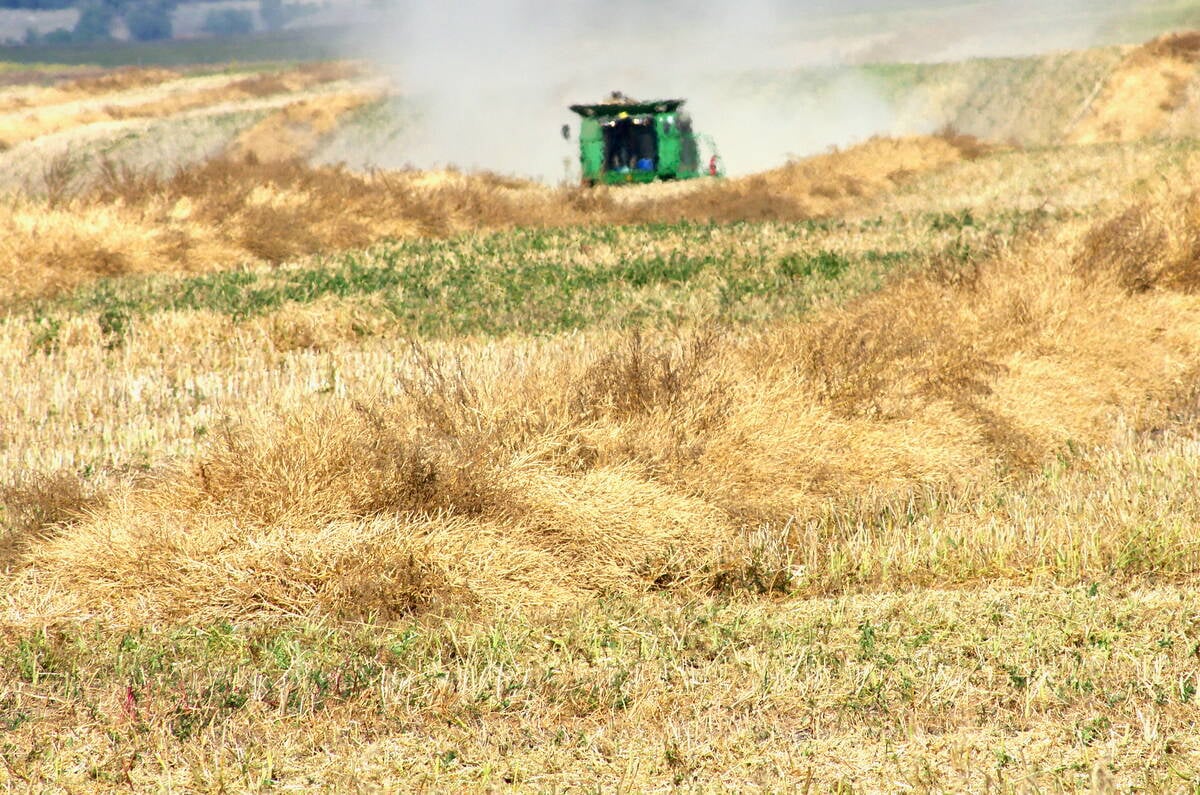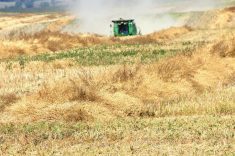Barley’s virtues as a healthy food may be documented fact, but producers say its financial rewards are less concrete.
Albert Wagner of Stony Plain, Alta., grew a hulless waxy barley last year as an identity preserved grain and sold it through the Canadian Wheat Board. The results, he said, were disappointing.
“There was no premium of classification from the board so it ended up being sold through the malt class, and because you get such a yield penalty with those hulless waxy varieties, the value of it was similar to growing a high yielding feed variety.”
Read Also

Manitoba searches for Plan B on canola oil exports
A new report explores Manitoba’s current canola oil trade and possible alternative markets to the U.S.
The grain had to go into a clean field with no volunteer grain and combines and trucks had to be cleaned. It yielded about 50 percent less than other varieties.
“There was nothing in the price to compensate you for that,” Wagner said.
When the idea of growing food grade barley emerged several decades ago, the grain should have undergone a name change to differentiate it, plant breeder Brian Rossnagel said during the Western Barley Growers Association meeting in Calgary on Feb. 16.
“We should have had the vision to change it in 1980.”
Since then, he added, specialty barleys have received cursory attention.
“This is very much an unfunded project.”
A December announcement from the United States recognizing beta glucan soluble fibre in barley as equivalent to oat fibre may raise the crop’s profile. This fibre has been recognized as helpful in controlling blood sugar and cholesterol.
The starch in this barley also produces a stable gel, an important additive in modern food products.
Developing high levels of beta glucan is easier to do in barley than in oats, although in the early days of development breeders worked to remove varieties with high beta glucan.
“We were actually working to get rid of these things because they were not good for baby pigs or poultry,” Rossnagel said.
Breeders were also told that “one program in Western Canada wasting its time on hulless food barley was more than enough.”
The major challenge in developing this product is finding a grain that produces up to 10 percent beta glucan while still remaining a hardy plant with a decent yield.
Jim Anderson of Agricore United’s seed production unit said the company has tried a number of varieties but a significant response from processors is needed to make it worth growing.
“We require clear signals for pro-duction. We have inventory left over from last year,” he said.
For University of Alberta researcher Thava Vasanthan, adding value to barley is worth doing, even though less than five percent of production ends up in the value added sector.
His work involves breaking the whole kernel down into fibre, protein and starch.
“In my view the secondary operations are the way to go if you want to create a lot of opportunities growing barley,” he said.
Barley can be used for tea, pearling, flour, alcohol, baking, protein and starch concentrate, feed, ethanol, food supplements and rice extenders.
There are also industrial uses.
For example, the paper industry uses potato or cornstarch and starch from barley could replace some of that.
Vasanthan has formed a company, Cevena Bioproducts Inc., which uses special technology to market the fibre sold under the trade name Viscofiber. It can go into food, beverages and nutrition supplements.
However, more processing companies need to start using barley before it can become a viable crop for farmers. There is plenty of talk about products on the horizon, but few are available commercially.
One example is ConAgra barley flour called Sustagrain, which is low in starch and contains 15 to16 percent beta glucan. It is used in bread, cereals, baked goods, energy bars, soups, pastas and tortillas.















